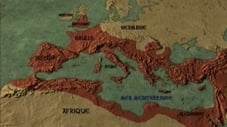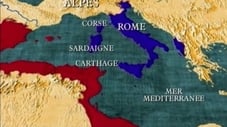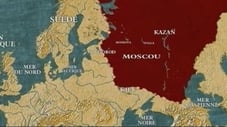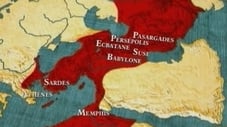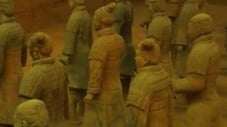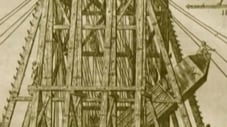
Season 1 (2005)
← シーズン一覧に戻る
エピソード 14
アレキサンダー時代のギリシア
See the engineering feats of Greece under Alexander the Great.
もっと読むアステカ
In less than 200 years the Aztec's transformed themselves from a band of wandering nomads to the greatest civilization the New World had ever known. What records remain of this amazing feat indicate they did it through brilliant military campaigns and by ingeniously applying technology to master the harsh environment they faced. They built their capital city where no city should have been possible: in the middle of a lake. The Aztec also practiced human sacrifice on an unprecedented scale and made many enemies. By the time the Spaniards landed they had no trouble recruiting tribal allies to destroy the Aztecs. Watch with host Peter Weller as we examine the architecture and infrastructure behind the New World's greatest, and last, indigenous society
もっと読むカルタゴ
Carthage, a remarkable city-state that dominated the Mediterranean for over 600 years, harnessed their extensive resources to develop some of the ancient world's most groundbreaking technology. For generations, Carthage defined power, strength and ingenuity, but by the third century B.C., the empire's existence was threatened by another emerging superpower, Rome. However, when the Romans engineered their empire, they were only following the lead of the Carthaginians. From the city's grand harbor to the rise of one of history's greatest generals, Hannibal Barca, we will examine the architecture and infrastructure that enabled the rise and fall of the Carthaginian Empire.
もっと読むマヤ
At the height of its glory, this mysterious civilization ruled a territory of 125,000 square miles across parts of Guatemala, Mexico, Honduras, El Salvador and Belize. What began as a modest population of hunters and gatherers expanded into more than forty flourishing city-states who engineered sky-high temple-pyramids, ornate palaces and advanced hydraulic systems. Where did they come from and what catastrophes caused the collapse of this innovative civilization? From the Temple-Pyramids at Tikal, to the royal tomb at Palenque, to the star observatory at Chichen Itza, this episode will examine the architecture and infrastructure that enabled the rise and fall of the ancient Maya civilization.
もっと読むロシア
At the height of its power the Russian Empire stretched across 15 times zones, incorporated nearly 160 different ethnicities, and made up one sixth of the entire world's landmass. What started as a few small principalities was shaped into an indomitable world power by the sheer force of its leaders. However, building the infrastructure of this empire came at an enormous price. As Russia entered the 20th century, her expansion reached critical mass as her rulers pushed progress at an unsustainable pace and her population reacted in a revolution that changed history. From the Moscow Kremlin, to the building of St. Petersburg, we will examine the architecture and infrastructure that enabled the rise and fall of the Russian Empire.
もっと読むイギリス
At its pinnacle, the British Empire spanned every continent and covered one quarter of the Earth's land mass. Through the centuries, the rulers of this enormous powerhouse used extraordinary engineering feats to become an industrial and military titan, loaded with riches. Some of their many pioneering accomplishments include the world's first locomotive, a superhighway of underground sewers, the imposing and grand Westminster Palace, and the most powerful and technically advanced navy in the age of sail.
もっと読むナポレオン(フランス)
Centuries after the fall of the Roman Empire, French kings struggled for control against the church and the aristocracy. Chaos and bloody warfare rampaged and France stood on the edge of utter disaster as the French Revolution turned into a period of brutal repression. From the ashes emerged one of the greatest military strategists in history, Napoleon. Throughout his reign, France built brilliantly innovative, widely influential masterpieces that have given the world some of its greatest feats of engineering.
もっと読むビザンチン
As much of the world descended into the dark ages after the fall of Rome, one civilization shone brilliantly: the Byzantine Empire. With ruthless might and supreme ingenuity the Byzantines ruled over vast swaths of Europe and Asia for more than a thousand years. The Byzantines constructed the ancient world's longest aqueduct, virtually invincible city walls, a massive stadium, and a colossal domed cathedral that defied the laws of nature
もっと読むDa Vincl's World(イタリア)
After the fall of Rome, Italy fell into a dark sleep, and wasn't reawakened until the 11th century. Autonomous city-states emerged and these tiny republics began to revitalize their cities and build on a massive level not witnessed since the rise of Rome. In the late 15th and 16th centuries, alliances among various city-states continually shifted as foreign superpowers tried to sink their claws into Italy. The masters who are best known for creating the works of art and architecture of the Renaissance, were also the greatest military and civil engineers of the time.
もっと読む